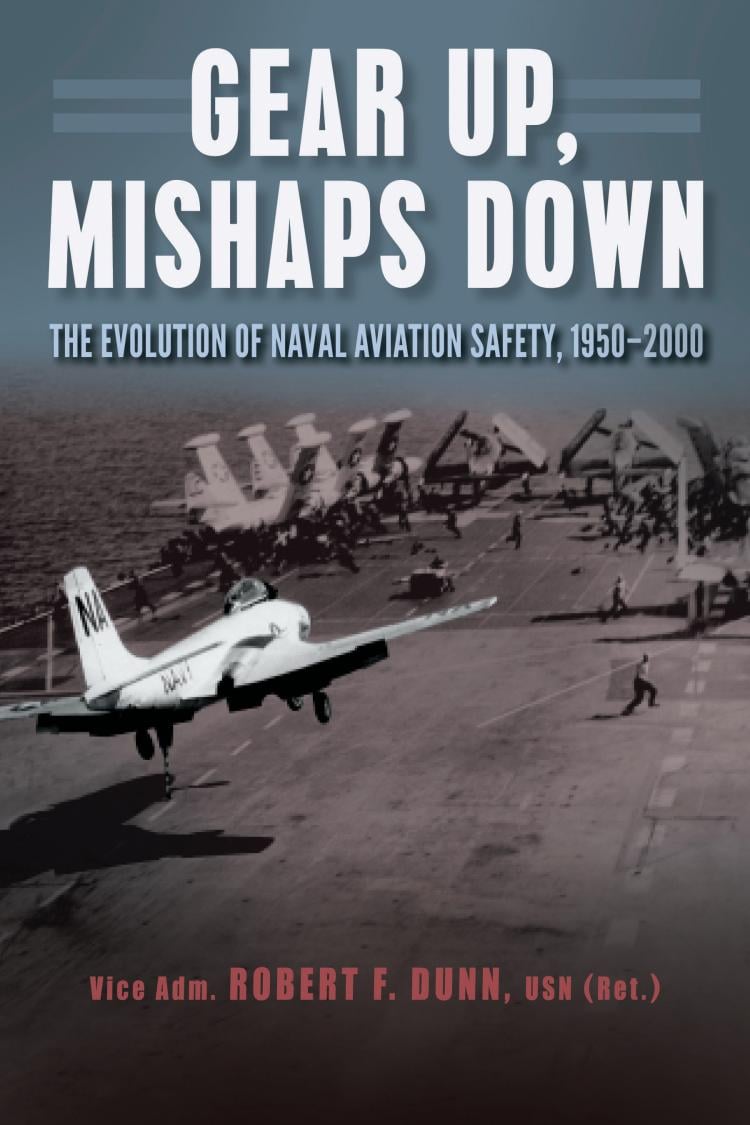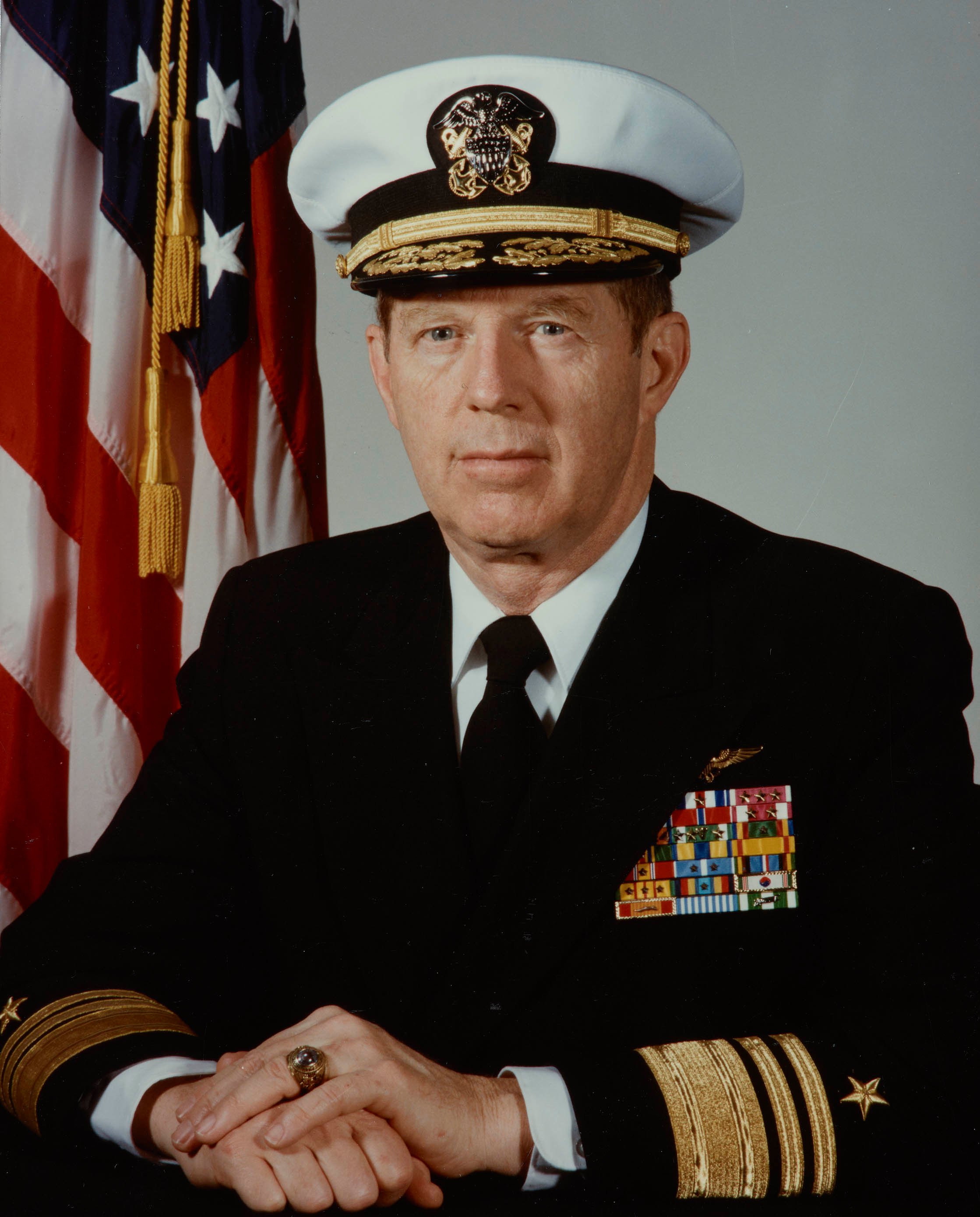"Gear Up, Mishaps Down"
"The Evolution of Naval Aviation Safety, 1950-2000"
- Subject: Aviation & Space | U.S. Navy | Clear the Decks Up to 80% OFF
- Format:
Hardcover
- Pages:
224pages
- Published:
January 15, 2017
- ISBN-10:
1682470059
- ISBN-13:
9781682470053
- Product Dimensions:
9 × 6 × 1 in
- Product Weight:
6 oz
Hardcover $10.18
Overview
Less than five years after naval aviation led the forces that defeated Imperial Japan that very organization was in serious trouble. The force had been drastically reduced and, despite the Korean War, growing sentiment supported by no less than the chairman of the Joint Chiefs argued that the new Air Force could do anything naval aviation might be required to do. Meanwhile, the naval aviation mishap rate soared. The very survival of naval aviation was at stake.
It took fifty years to turn this around. Today, in spite of hot wars, cold wars, contingencies, and peacetime operations in support of friends and allies, the Navy and Marine Corps accident rate is at least as good as that of the Air Force, and it approaches that of commercial aviation. Gear Up, Mishaps Down explains that this accomplishment was achieved through dedicated and professional leadership, a focus on lessons learned from mishaps and near-mishaps, a willingness to learn from other enterprises, and by better leadership, training, maintenance, supply and more.
About the Author
Editorial Reviews
"Dunn does a good job of describing the various threads that led to the Navy's victory over mishaps and the book is worthwhile reading for anyone who has ever been involved in naval aviation, but in the end it falls short of delivering more-thorough reporting." —Naval War College Review
"While Gear Up, Mishaps Down should be of interest to anyone who follows military aviation, it should definitely be read by squadron Cos, XOs and Safety Officers almost as part of their pass-down folders..." —The A-4 Ever
“Addressing questions of ‘how’ and ‘why’ the Navy brought about an almost unbelievable reduction in aviation accident rates, Admiral Dunn summarizes several factors that one could attribute: ‘better leadership, better selection, better personnel management. Improved integration of aviation medicine, better aircraft and systems, better maintenance and supply, angled decks and mirrors, the replacement training concept, or NATOPS’....The author is uniquely qualified to illustrate the interplay of these elements over the period in question, having graduated from the United States Naval Academy in 1951 before serving a distinguished career as a naval aviator, including combat experience and command of the USS Saratoga and the Naval Safety Center.” —Aviation Digest
"The book does an admirable job of identifying the technical, cultural, and political issues that drove the need for enhanced and standardized flight safety." —Air Space and Power Journal
...An excellent read for naval historians, pilots and safety managers but perhaps also chief executives who need an example of successful culture change within a large organization." —Aerospace/The Aeronautical Journal
"Admiral Dunn has added immensely to our knowledge of how to decrease mishaps in the naval aviation community. His book is on that every squadron commander should read, reread and take to heart." —The Daybook
"This book is written with a clear overall plan and easy to follow." —Air Power History
"Nobody knows more about naval aviation than Vice Adm. Bob Dunn. As a highly regarded fleet aviator and former commander of the Naval Safety Center, he is perfectly placed to write this insightful history of carrier aviation's decades-long search for improved equipment, procedures, and techniques. His well-researched text is enhanced by descriptions of the personalities most responsible for raising safety from the doldrums of the 1950s, when the future of carrier aviation looked uncertain, to today's unparalleled levels of operating efficiency." — BARRETT TILLMAN, author of On Wave and Wing: The 100-Year Quest to Perfect the Aircraft Carrier
"Thorough and authoritative, meticulously documented and with valuable appendices, this is a long-needed contribution both to the history of naval aviation and to the evolution of aviation safety within the U.S. military. Bravo Zulu, Admiral Dunn." —DR. RICHARD P. HALLION, former historian of the U.S. Air Force, author of The Naval Air War in Korea and Strike from the Sky: The History of Battlefield Air Attack, 1911‒1945
"Who knew that one of the great modern leaders of naval aviation was a litterateur! With the introduction of jets into aircraft carriers, the chances of career Navy pilots being killed in an accident in the 1950s was 25 percent. The untold story of how the Navy reduced peacetime crashes from nearly two thousand per year to the current rate of fewer than twenty, all while fighting wars and keeping the peace, is a fascinating read. Vice Admiral Dunn takes what could have been a dull technical history and turns it into a real page-turner full of hair-raising anecdotes and clear, jargon-free prose. Everyone who has ever flown needs to get this book." —JOHN F. LEHMAN, 65th Secretary of the Navy
"Vice Adm. Bob Dunn's thorough research is enhanced by his firsthand experience with the issues he describes and his exceptional knowledge of the subject. The approaches and techniques pursued by the Navy that Dunn describes have application to any line of endeavor and are recommended for anyone faced with solving complex problems." —GEN. J. R. DAILEY, USMC (Ret.), Director, Smithsonian National Air and Space Museum
"This comprehensive story of naval aviation safety over the decades will resonate with every naval aviator, young and old, as he or she relives their personal contribution to the mishap/accident database as participants toward solutions that have led to extraordinary achievement in design, production, and aerial performance, in peacetime and combat. This is a must-read by all who ever wore the Navy wings of gold as well as all who have an interest in the improvement of safety in any complex enterprise." —ADM. THOMAS B. HAYWARD, USN (Ret.), 21st Chief of Naval Operations





